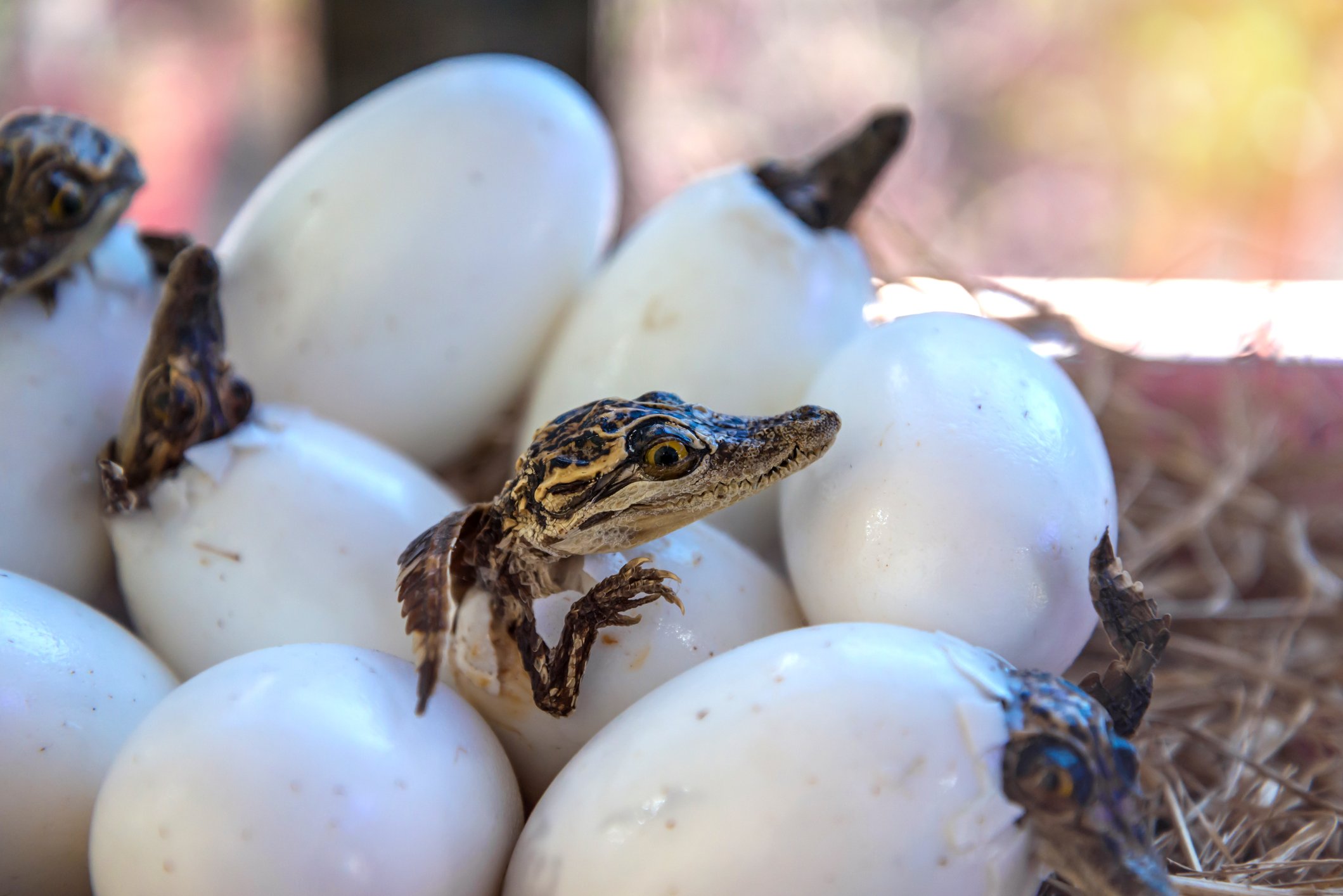An-Animal-a-Month: Crocodilians
Photo 59143033 / Crocodiles © Casanowe | Dreamstime.com
Are your children and students familiar with all the members of the crocodilian family –the crocodiles, alligators, caimans, and gharials? Do they know that some crocodilians are terrific parents? Explore these carefully crafted, humorous, and informative books to learn more about these ancient reptiles.
A parenting guide for crocs! An unseen narrator fields questions from soon-to-be crocodilian parents. From how big and tough their babies will be to when the babies will be ready to fend for themselves, the parents want to know everything, and we come to know and appreciate their parenting skills. There’s a good dose of humor and facts galore, followed by a glossary of subject-specific words and suggestions for further reading. Though it’s an older title, from 2012, I think the innovative, fun approach still makes it stand out from other books about crocs. Ages 7-11.
Kind of nonfiction: Expository Literature – a narrow focus on how crocodilians rear their young and a fun, innovative structure. Part of a series, including books about raising joeys and larvae too. (My categorization using Melissa Stewart’s 5 Kinds of Nonfiction.)
Ties to Next Generation Science Standards:
1-LS1-2 (Read texts and use media to determine patterns in the behavior of parents and offspring that help offspring survive.) Fantastic title to address this standard! Students will see the parents constructing a nest with rotting plants to help keep their eggs warm on page 8 (compare with birds that sit on eggs to keep them warm). Page 9 shows how the adult female eats bones to provide calcium for her developing eggs. Page 10-11 illustrates the nest-guarding behavior of parents that protects their eggs from predators. Pages 14-15 show ready-to-hatch babies making noises to elicit help from mom. The mom assists by gently using her mouth to help babies hatch and travel to the water. Mom will continue to watch over her little ones for up to two years.
3-LS1-1 (Develop models to describe that organisms have unique and diverse life cycles but all have in common birth, growth, reproduction, and death.) This title shows the life cycle (excluding death) of the reptiles in the crocodilian family, from development in the egg, hatching, growth, and reaching sexual maturity. Students can compare this life cycle with that of mammals, birds, insects, fish, and amphibians.
3-LS3-2 (Use evidence to support the explanation that traits can be influenced by the environment.) Turn to pages pages 12-13 to learn how nest temperature affects the sex of the hatchlings.
Raising crocodiles in school! Through a conservation and education project in Costa Rica, schoolchildren raised American crocodiles. What would that experience be like? Find out in this fictionalized, diary-style account of one student. Readers will watch as the student cares for Jefe, the croc, watches him grow and develop a personality, and finally releases him into the wild. A combination of photographs and illustrations of the animals, the student, and the habitat help bring the account to life. Find back matter about the 24 species of crocodilians and how to distinguish them, all about croc teeth, and about the co-author Ph.D. herpetologist Dr. Brady Barr. Ages 4-8.
Kind of nonfiction: Narrative informational fiction – a combination of nonfiction and fiction that conveys the experience of raising a crocodile. Though it was shelved with nonfiction in my local library, it’s technically informational fiction, as the main character has been fictionalized (this is stated on the title page). (My categorization using Melissa Stewart’s 5 Kinds of Nonfiction.)
Tickle your funny bone and your brain! Another outstanding title in The Truth About …series by Maxwell Easton III. Other books in the series focus on hippos, bears, dolphins, and elephants – I love them all! They are packed with facts that go beyond the basics, all while keeping the reader laughing from page to page. There’s even a spread about staying safe from crocs and how to help protect them. A treat for children ages 4-8.
Kind of book: Expository literature. Though it’s like a survey book about crocodilians and could be considered a traditional nonfiction title, I think the clever humor moves it into the expository literature category. (My categorization using Melissa Stewart’s 5 Kinds of Nonfiction.)
Children could compare and contrast these three titles. Then they could think about which one is their favorite and why.



